

上代码:
module timecheck(CLR,CLK,A,B,Z);
input CLR,CLK,A,B;
output Z;
reg Z;
wire [1:0]DATA_IN;
reg [3:0]STATE;
parameter state_idle = 4'b00x0,
state_match1 = 4'b0000,
state_match2 = 4'b0001,
state_match3 = 4'b0011,
state_match4 = 4'b0111;
assign DATA_IN = {A,B};
initial begin
STATE =state_idle;
end
always @(posedge CLK or posedge CLR)
begin
if(~CLR)
begin
Z<=0;
STATE <=state_idle;
end
else
case(STATE)
state_idle:
if((DATA_IN==2'b00) || (DATA_IN==2'b10 ))
begin
STATE <=state_idle;
Z<=0;
end
else if(DATA_IN==2'b01)
begin
STATE <=state_match2;
Z<=0;
end
else if(DATA_IN==2'b11)
begin
STATE <=state_match3;
Z<=0;
end
state_match1:
if((DATA_IN==2'b00) || (DATA_IN==2'b10 ))
begin
STATE <=state_idle;
Z<=0;
end
else if(DATA_IN==2'b01)
begin
STATE <=state_match2;
Z<=0;
end
else if(DATA_IN==2'b11)
begin
STATE <=state_match1;
Z<=0;
end
state_match2:
if((DATA_IN==2'b00) || (DATA_IN==2'b10 ))
begin
STATE <=state_idle;
Z<=0;
end
else if(DATA_IN==2'b01)
begin
STATE <=state_match2;
Z<=0;
end
else if(DATA_IN==2'b11)
begin
STATE <=state_match4;
Z<=0;
end
state_match3:
if(DATA_IN==2'b00)
begin
STATE <=state_idle;
Z<=0;
end
else if(DATA_IN==2'b01)
begin
STATE <=state_match2;
Z<=0;
end
else if(DATA_IN==2'b11)
begin
STATE <=state_match1;
Z<=0;
end
else if(DATA_IN==2'b10)
begin
STATE <=state_match1;
Z<=1;
end
state_match4:
if(DATA_IN==2'b00)
begin
STATE <=state_idle;
Z<=1;
end
else if(DATA_IN==2'b10)
begin
STATE <=state_idle;
Z<=0;
end
else if(DATA_IN==2'b01)
begin
STATE <=state_match1;
Z<=1;
end
else if(DATA_IN==2'b11)
begin
STATE <=state_match1;
Z<=0;
end
endcase
end
endmodule
测试代码:
`timescale 1ns / 1ns
module tb_timecheck();
reg clr,clk,a,b;
wire z;
parameter data_input = 20'b1010_1110_0111_0111_0001;
reg [4:0] i;
timecheck tb_time(.CLR(clr),.CLK(clk),.A(a),.B(b),.Z(z));
initial begin
clr= 0;
a=0;
b=0;
clk=0;
i=5'd0;
#5
clr =1;
end
always #5 clk = ~ clk;
always @(posedge clk or posedge clr)
begin
if(~clr)
begin
i<=5'd0;
end
else if (i<5'd20)
begin
a<=data_input[i];
b<=data_input[i+1];
i<=i+5'd2;
end
else
begin
i<=5'd2;
a<=data_input[0];
b<=data_input[1];
end
end
endmodule综合电路图:
仿真波形:
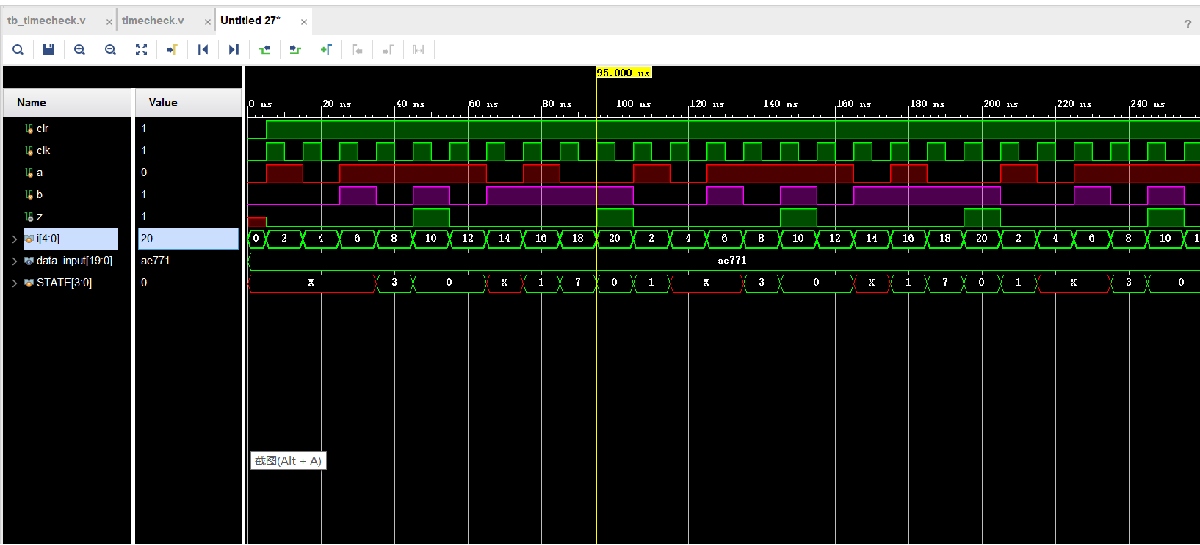 同学做的比我好多了,上图:
同学做的比我好多了,上图:





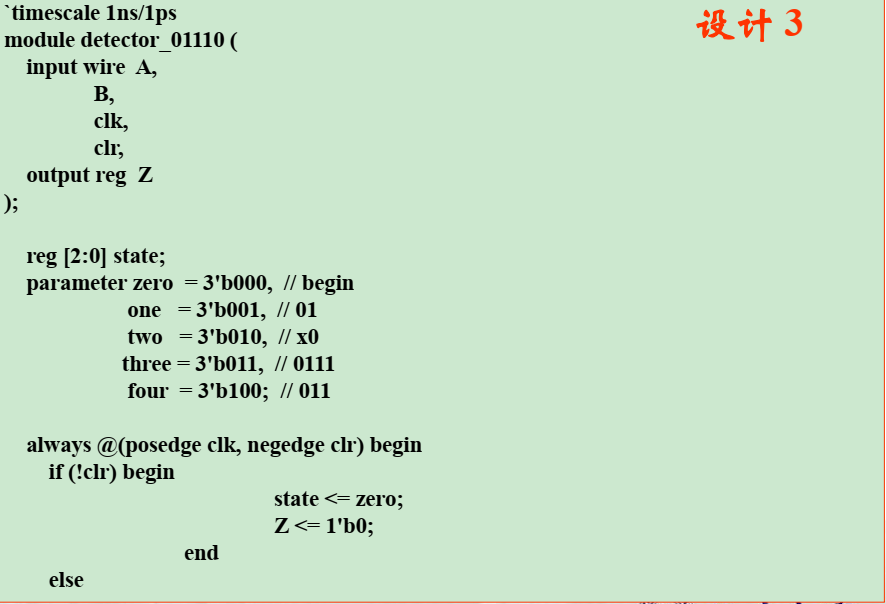

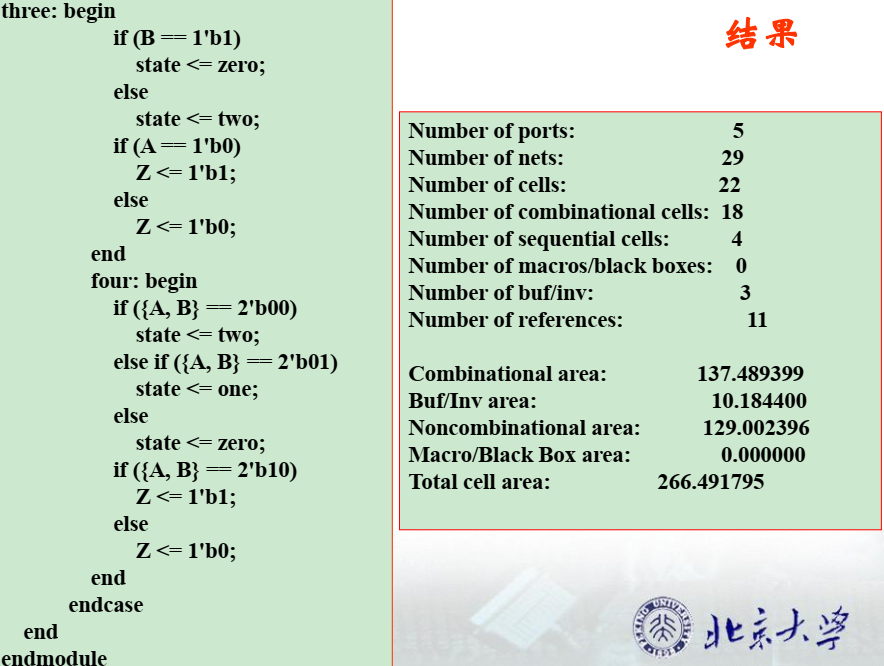




![]()


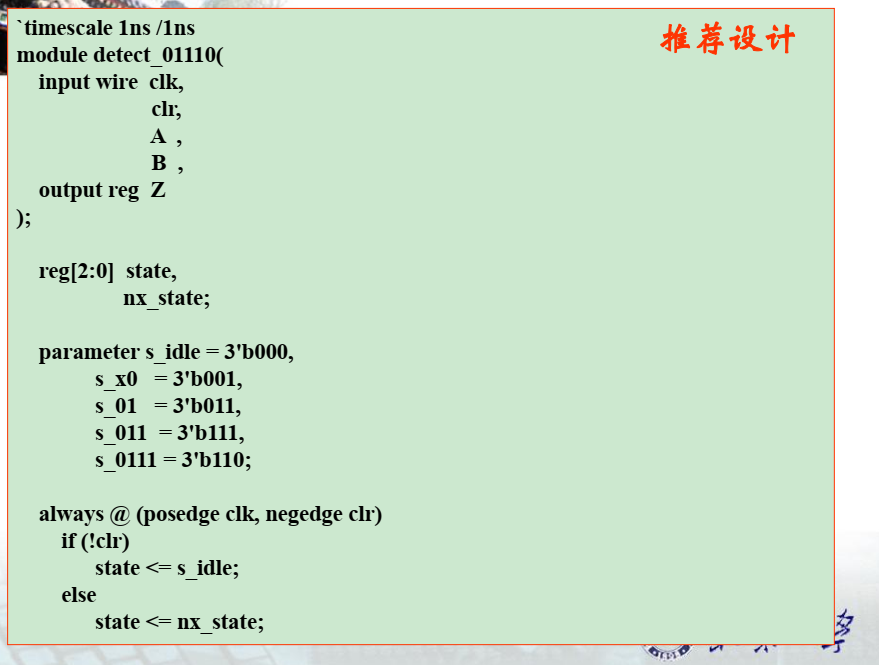

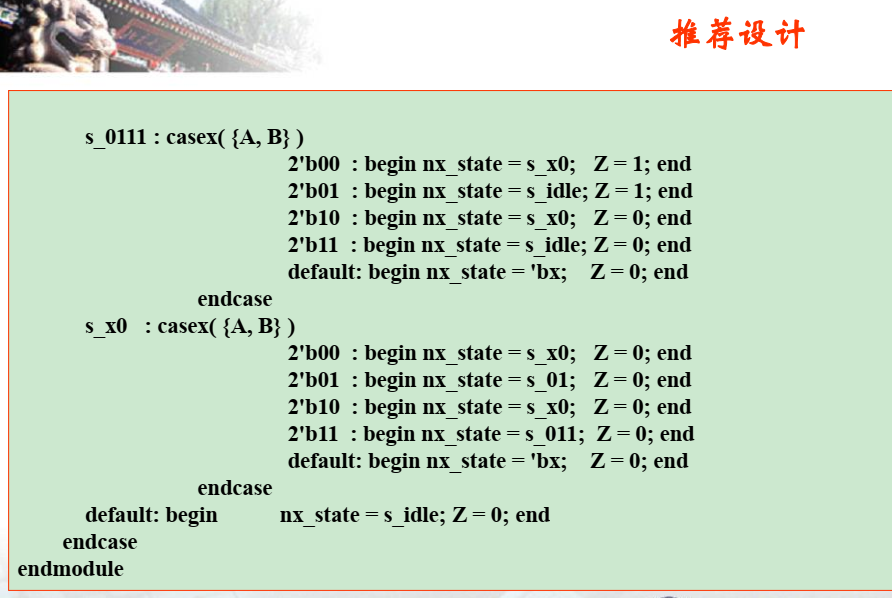

最后
以上就是耍酷往事最近收集整理的关于序列检测功能的时序电路(verilog 01110)的全部内容,更多相关序列检测功能的时序电路(verilog内容请搜索靠谱客的其他文章。
本图文内容来源于网友提供,作为学习参考使用,或来自网络收集整理,版权属于原作者所有。








发表评论 取消回复